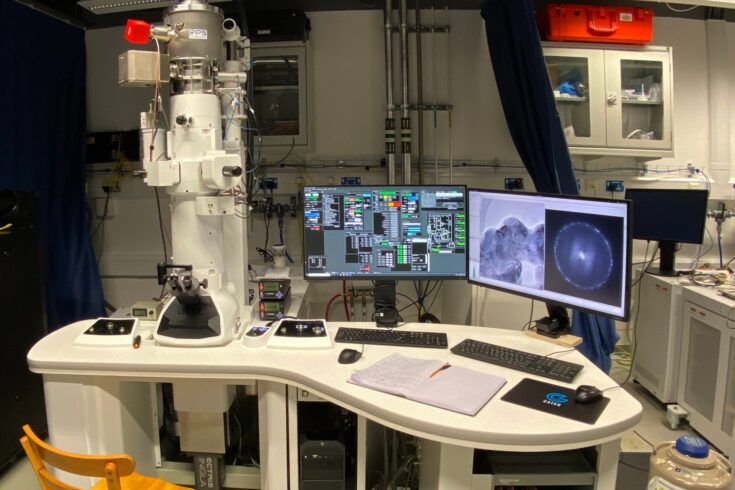Researchers have proved beyond doubt that it is possible to get better results using a lower voltage electron cryo-microscope that is a fraction of the size and cost of current alternatives.
It aims to slash the cost of running electron cryo-microscopy (cryoEM) to make it more accessible to scientists all over the world.
Increasing access to cryoEM technology will enable the structures of many more proteins to be determined that are important for understanding biology and developing new therapeutics and better healthcare.
The research, published in the Proceedings of the National Academy of Sciences, was carried out at the Medical Research Council (MRC) Laboratory of Molecular Biology (LMB).
Small, efficient and reasonably priced
Dr Christopher Russo from the MRC LMB, said:
Current electron cryo-microscopes are like Ferraris – expensive, complex and designed for high performance.
What we have come up with is essentially a family hatchback that is small, efficient and reasonably priced.
The next step is to get the technology fully commercialised so that it can be used by biologists all over the world.
When this project is fully commercialised it will help create new jobs and have a real impact on the economy.
The first prototypes are expected to be in laboratories by 2024.
Key advances
The work was led by Dr Greg McMullan at the MRC LMB.
The paper describes several key advances, including:
- a new 100 kilo-electronvolt (keV) field emission gun
- a low aberration objective lens with cryobox
- a new high speed, high-efficiency electron detector
These are all designed for efficient structure determination by single-particle cryoEM.
Together these developments mean that an electron cryo-microscope can now be constructed that is far cheaper than current models.
It will also reduce the time and effort required for structure determination, even when compared to more powerful state-of-the-art 300 keV microscopes.
Future development
The new lower cost microscope will help set the path for the future development of experimental structural biology and help grow the number of structures being determined.
Dr Russo says:
This microscope will allow us to see things we could not see before.
It will both lower the cost of research and improve results, and have significant long term, lasting impacts.
In their paper, the researchers have demonstrated conclusively that it’s possible to do as much with modest hardware as you can with much more expensive equipment, and potentially even more.
More time to study samples
An additional advantage of the new microscope is that it will give scientists more time to study their samples.
Current cryoEM microscopes emit enough radiation to damage samples, meaning researchers must work against the clock to get results.
But the new cryoEM microscope uses far less power meaning scientists will have longer to review their samples before they are damaged.
Critical support
Dr Russo says:
Support from MRC through the LMB has been critical to this project’s development.
The organisation has provided a space for our work with extremely good, in-house technical support that allowed us to reach out and get help when we needed it.
That is very rare in science.
This latest study builds on decades of world-leading research at the MRC LMB, which brought the breakthrough of cryo-electron microscopy, gaining Dr Richard Henderson a Nobel Prize in 2017.
Top image: The new 100 keV electron microscope, which is much smaller than existing high-end models. Credit: MRC Laboratory of Molecular Biology

